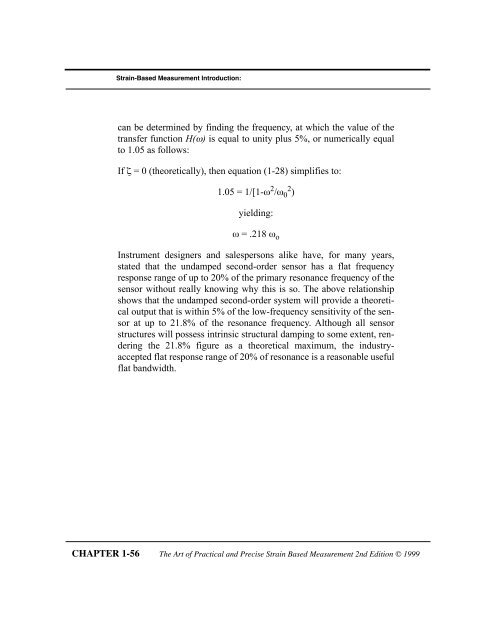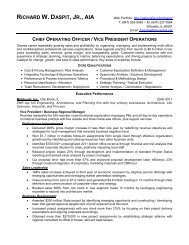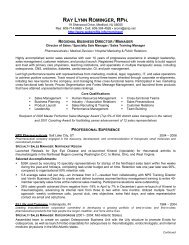The Art of Practical and Precise Strain Based ... - Webprofile.info
The Art of Practical and Precise Strain Based ... - Webprofile.info
The Art of Practical and Precise Strain Based ... - Webprofile.info
- No tags were found...
You also want an ePaper? Increase the reach of your titles
YUMPU automatically turns print PDFs into web optimized ePapers that Google loves.
<strong>Strain</strong>-<strong>Based</strong> Measurement Introduction:can be determined by finding the frequency, at which the value <strong>of</strong> thetransfer function H(w) is equal to unity plus 5%, or numerically equalto 1.05 as follows:If z = 0 (theoretically), then equation (1-28) simplifies to:1.05 = 1/[1-w 2 /w 0 2 )yielding:w = .218 w oInstrument designers <strong>and</strong> salespersons alike have, for many years,stated that the undamped second-order sensor has a flat frequencyresponse range <strong>of</strong> up to 20% <strong>of</strong> the primary resonance frequency <strong>of</strong> thesensor without really knowing why this is so. <strong>The</strong> above relationshipshows that the undamped second-order system will provide a theoreticaloutput that is within 5% <strong>of</strong> the low-frequency sensitivity <strong>of</strong> the sensorat up to 21.8% <strong>of</strong> the resonance frequency. Although all sensorstructures will possess intrinsic structural damping to some extent, renderingthe 21.8% figure as a theoretical maximum, the industryacceptedflat response range <strong>of</strong> 20% <strong>of</strong> resonance is a reasonable usefulflat b<strong>and</strong>width.CHAPTER 1-56 <strong>The</strong> <strong>Art</strong> <strong>of</strong> <strong>Practical</strong> <strong>and</strong> <strong>Precise</strong> <strong>Strain</strong> <strong>Based</strong> Measurement 2nd Edition © 1999
















